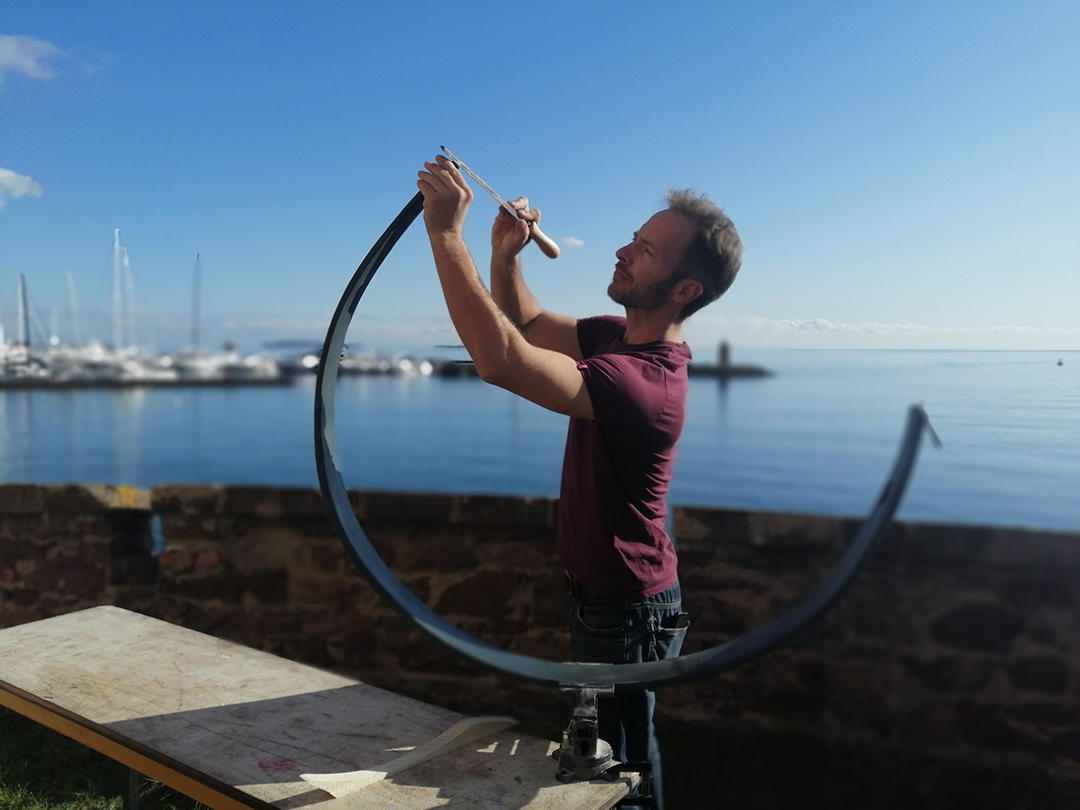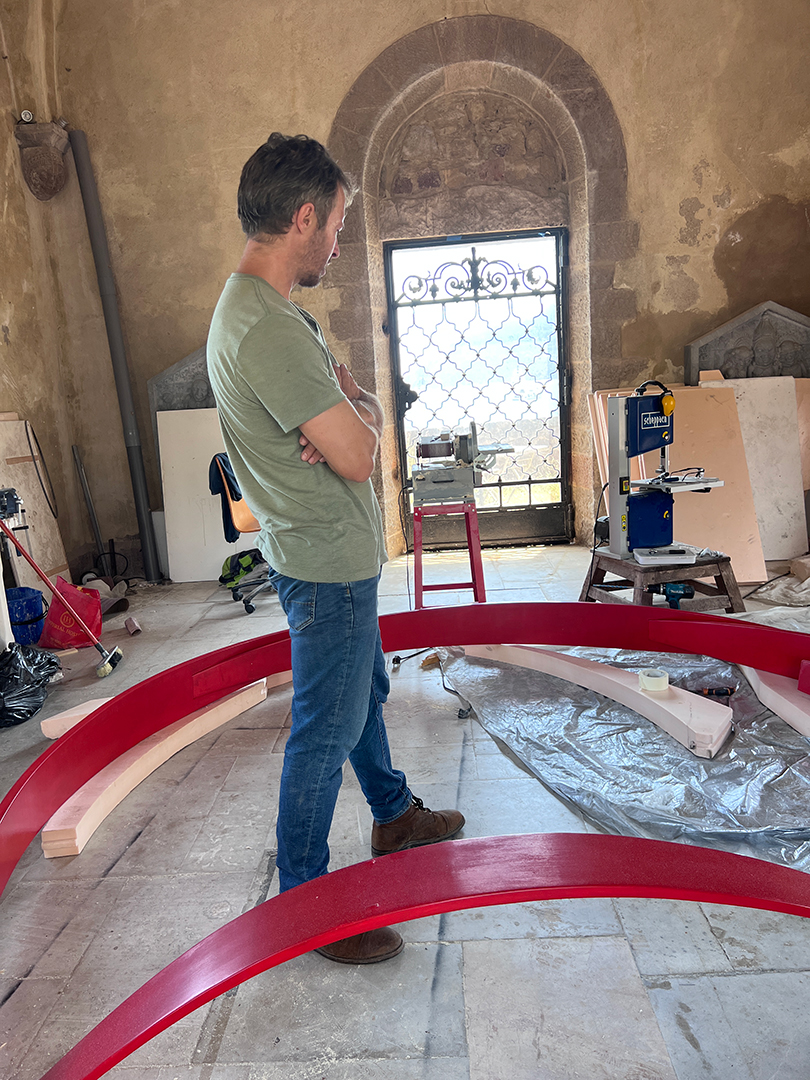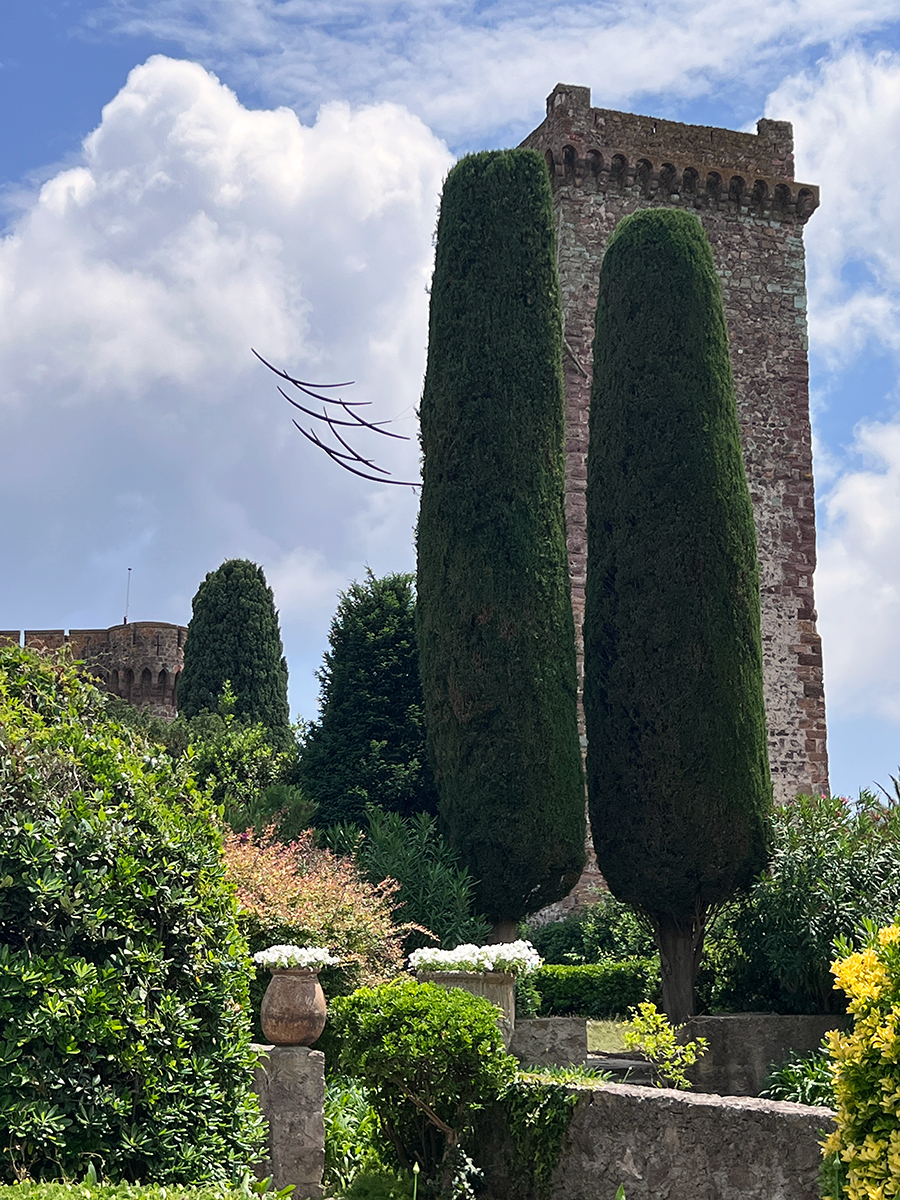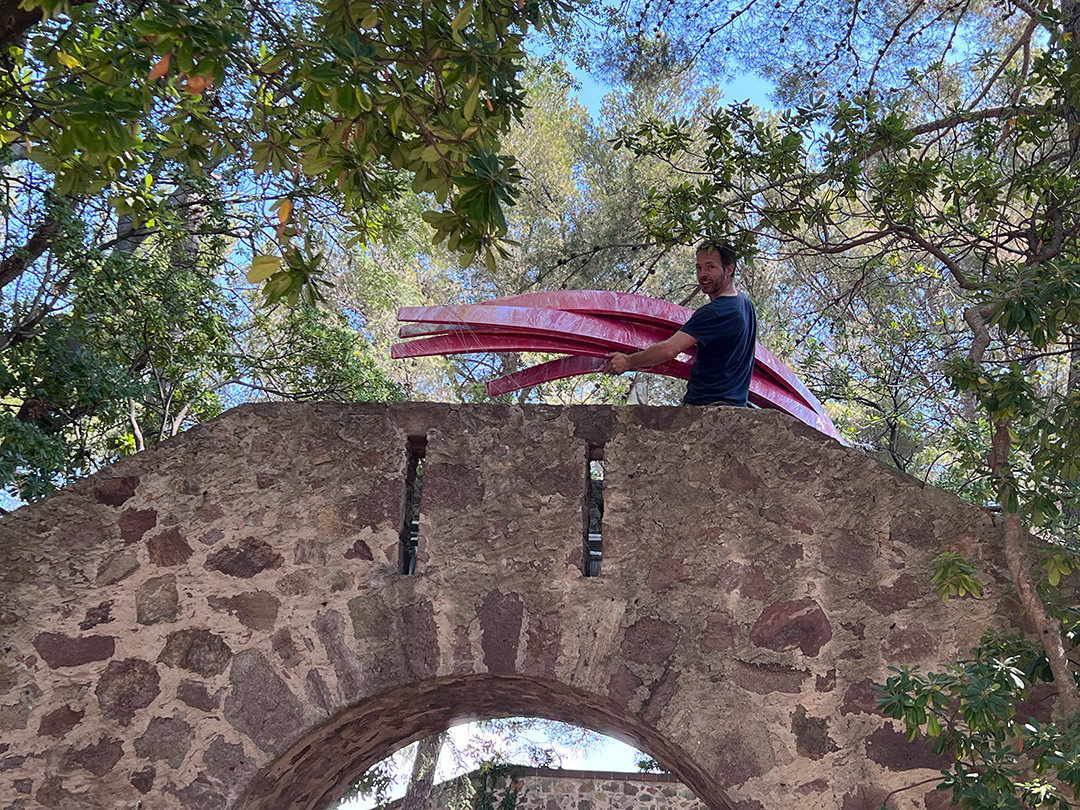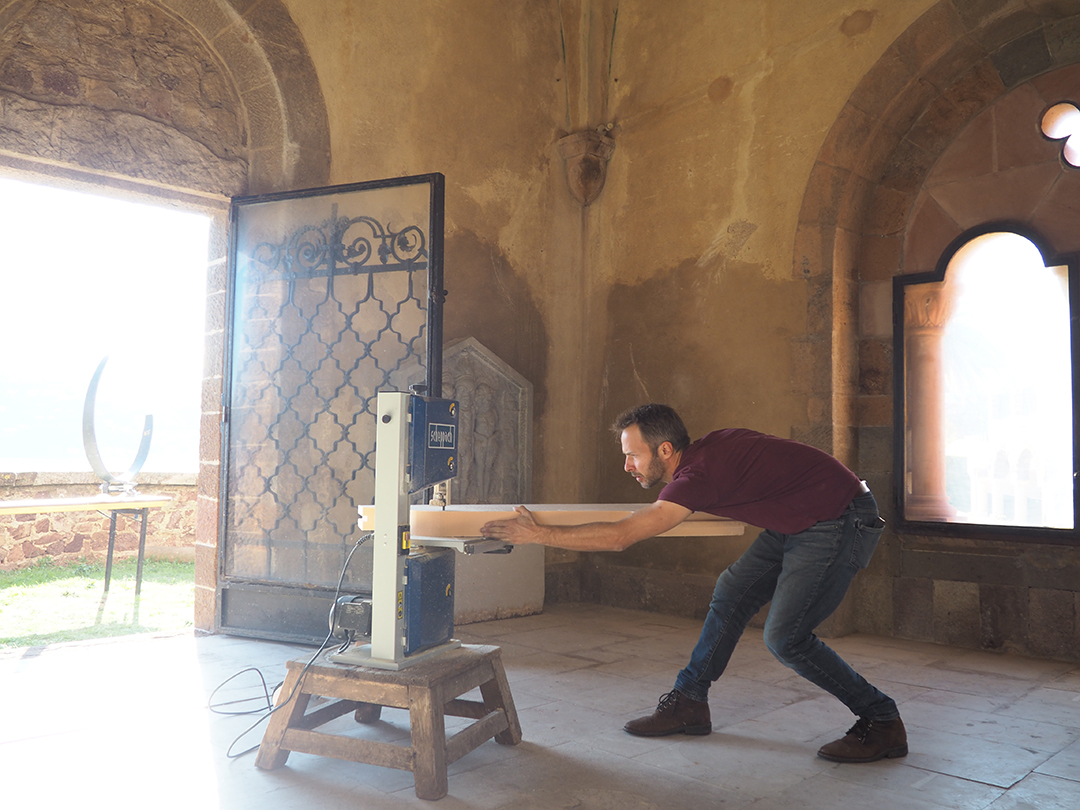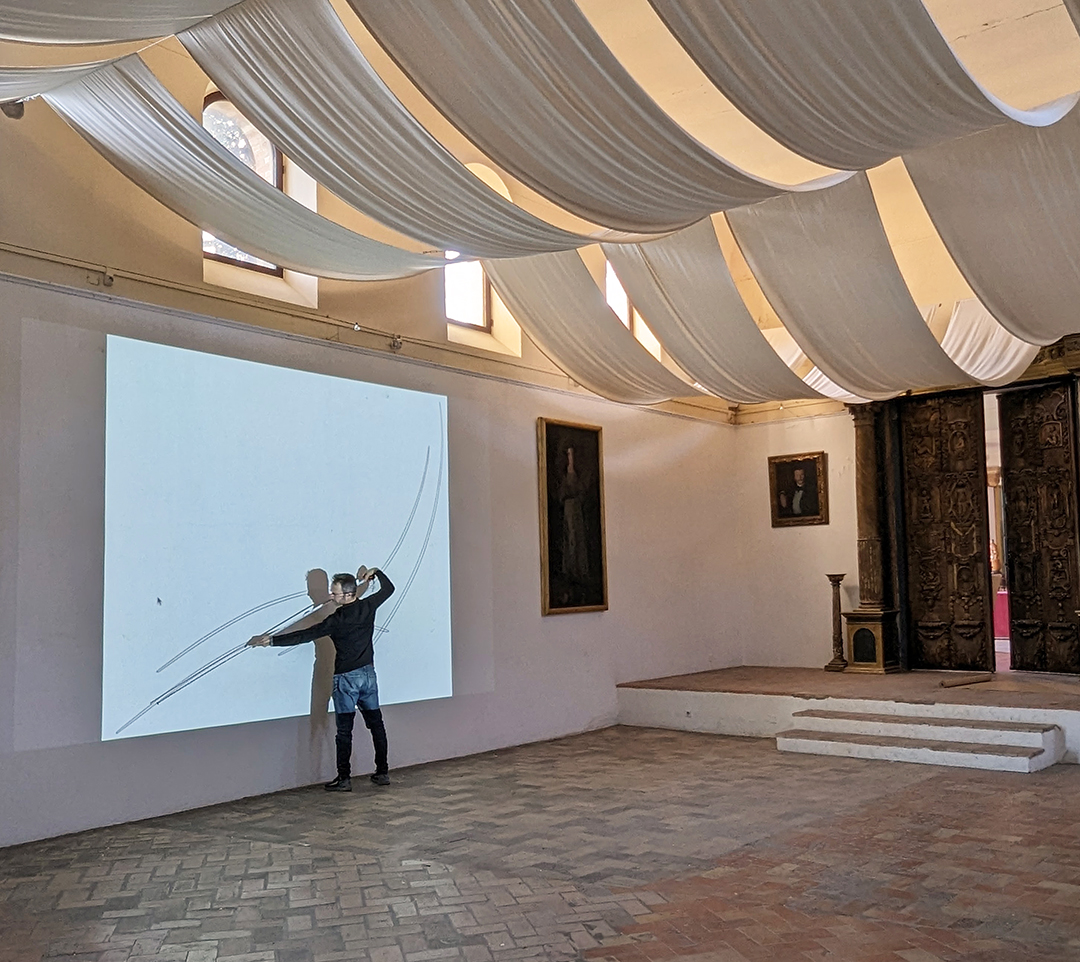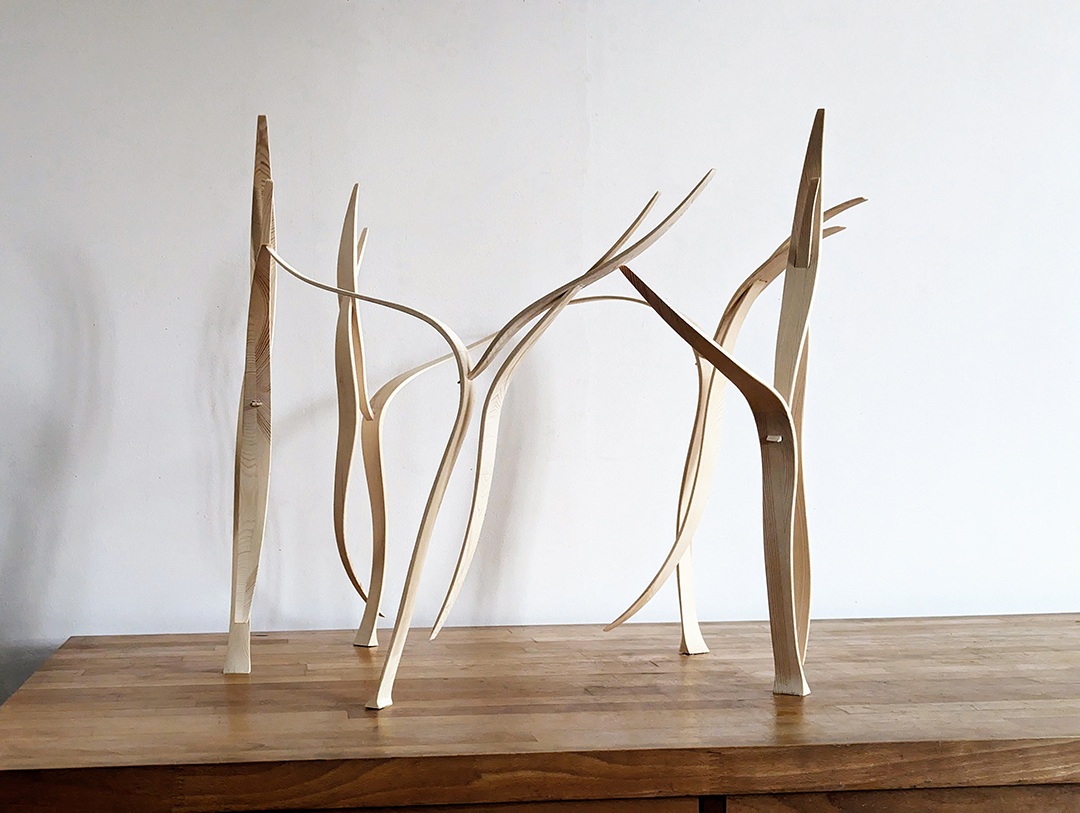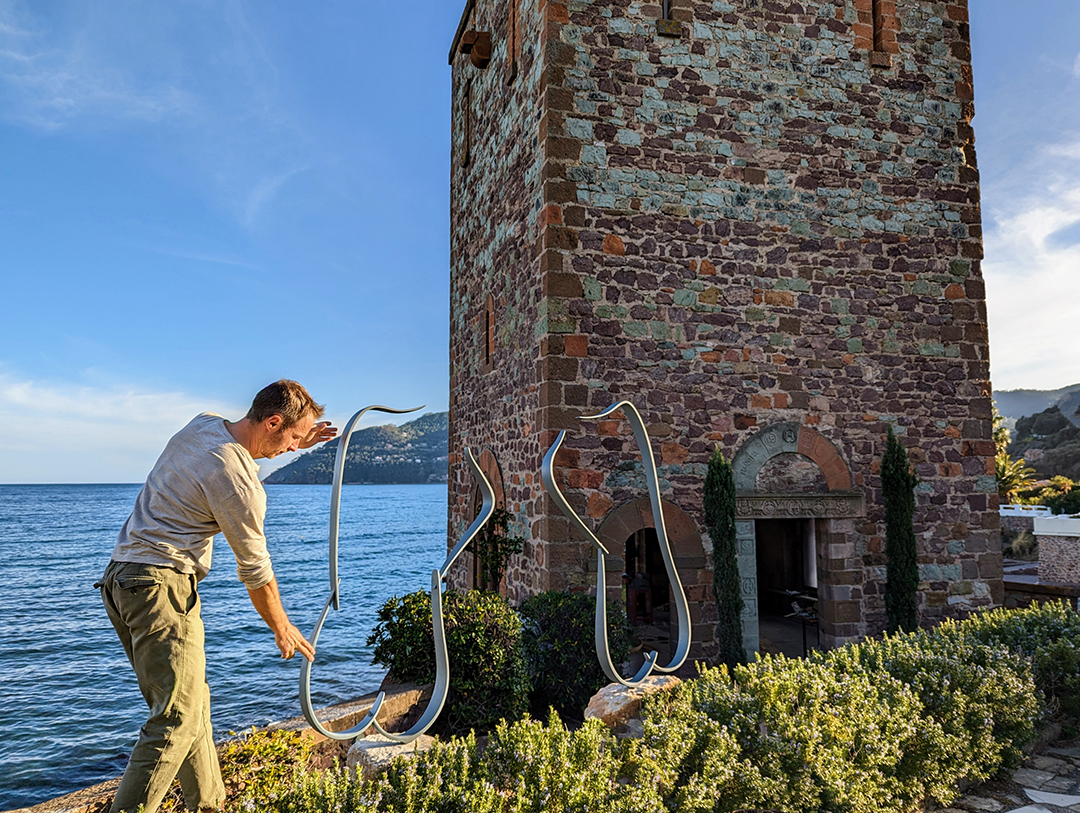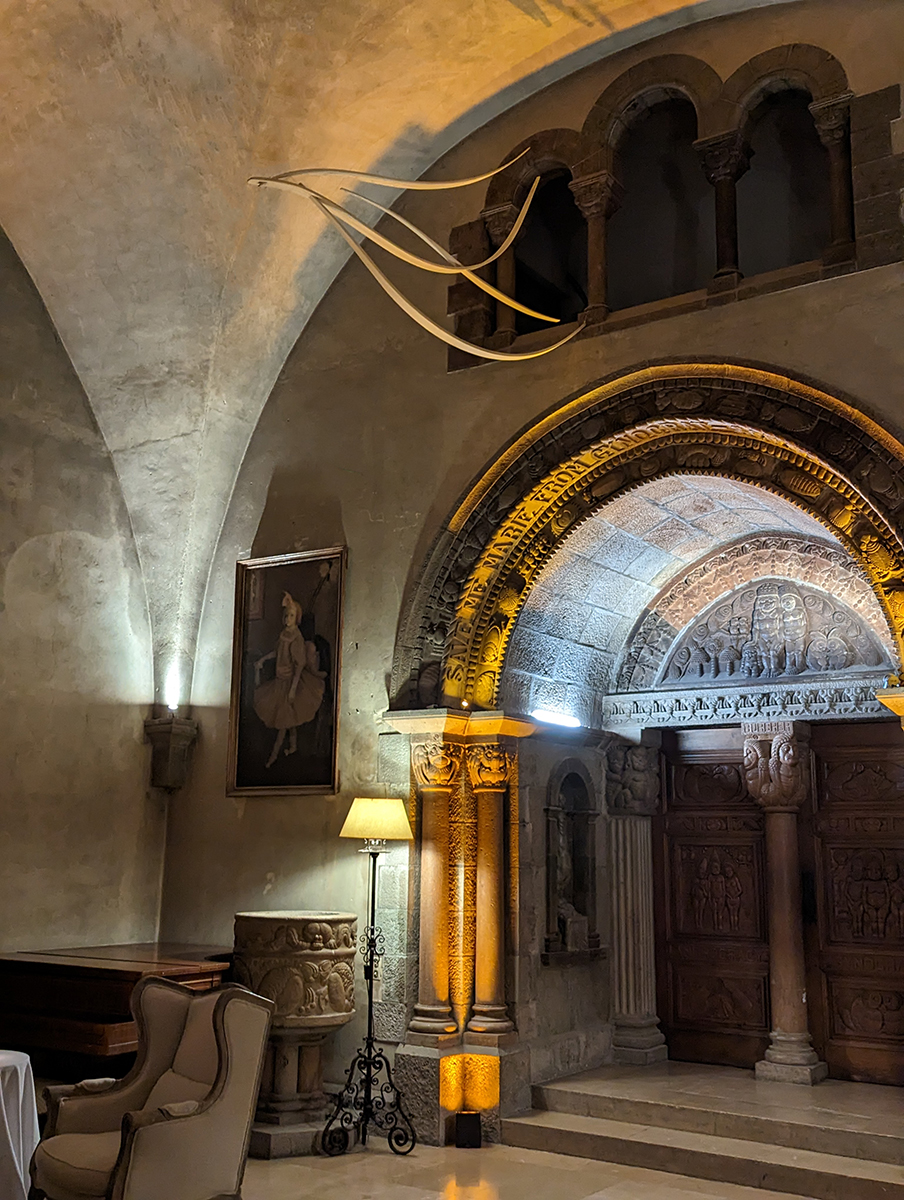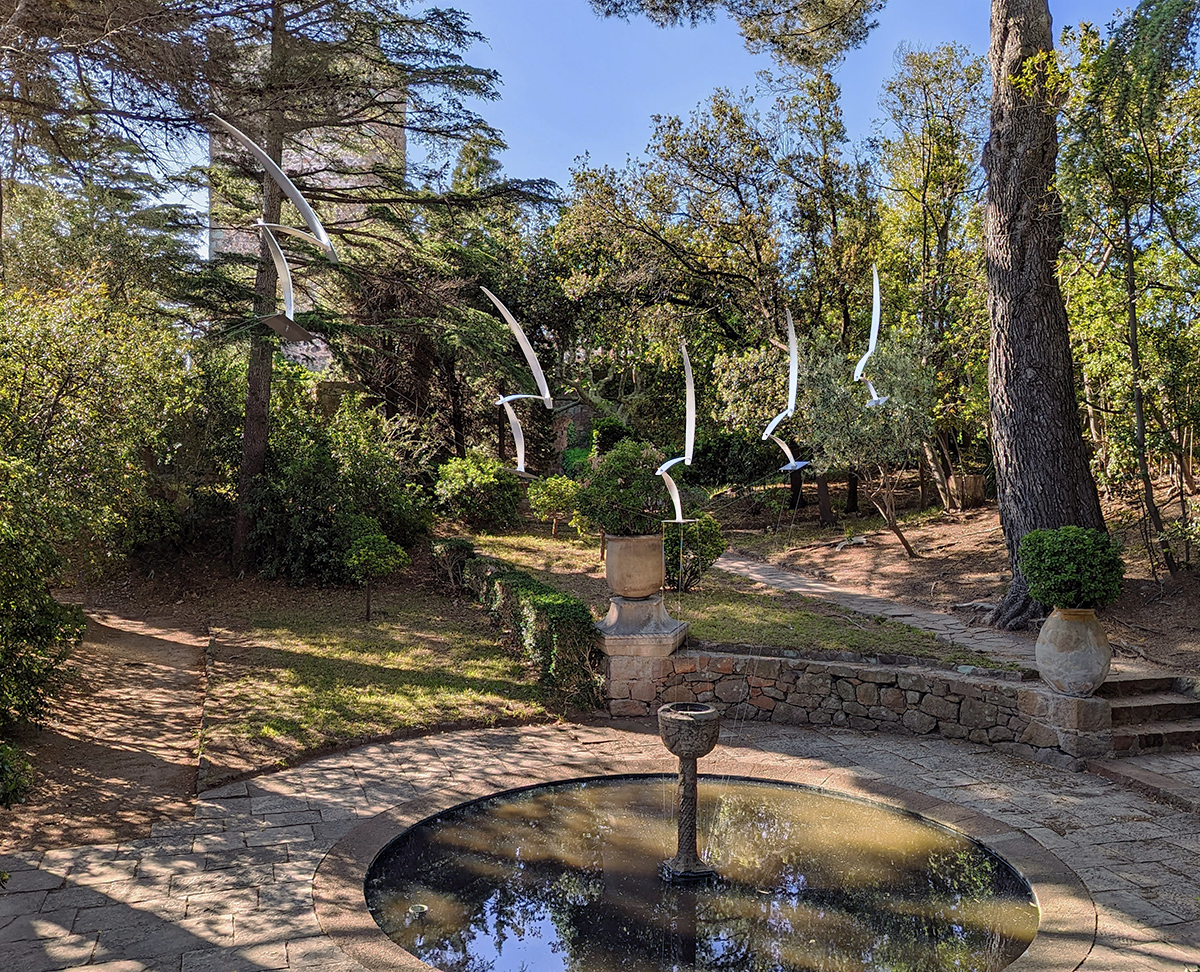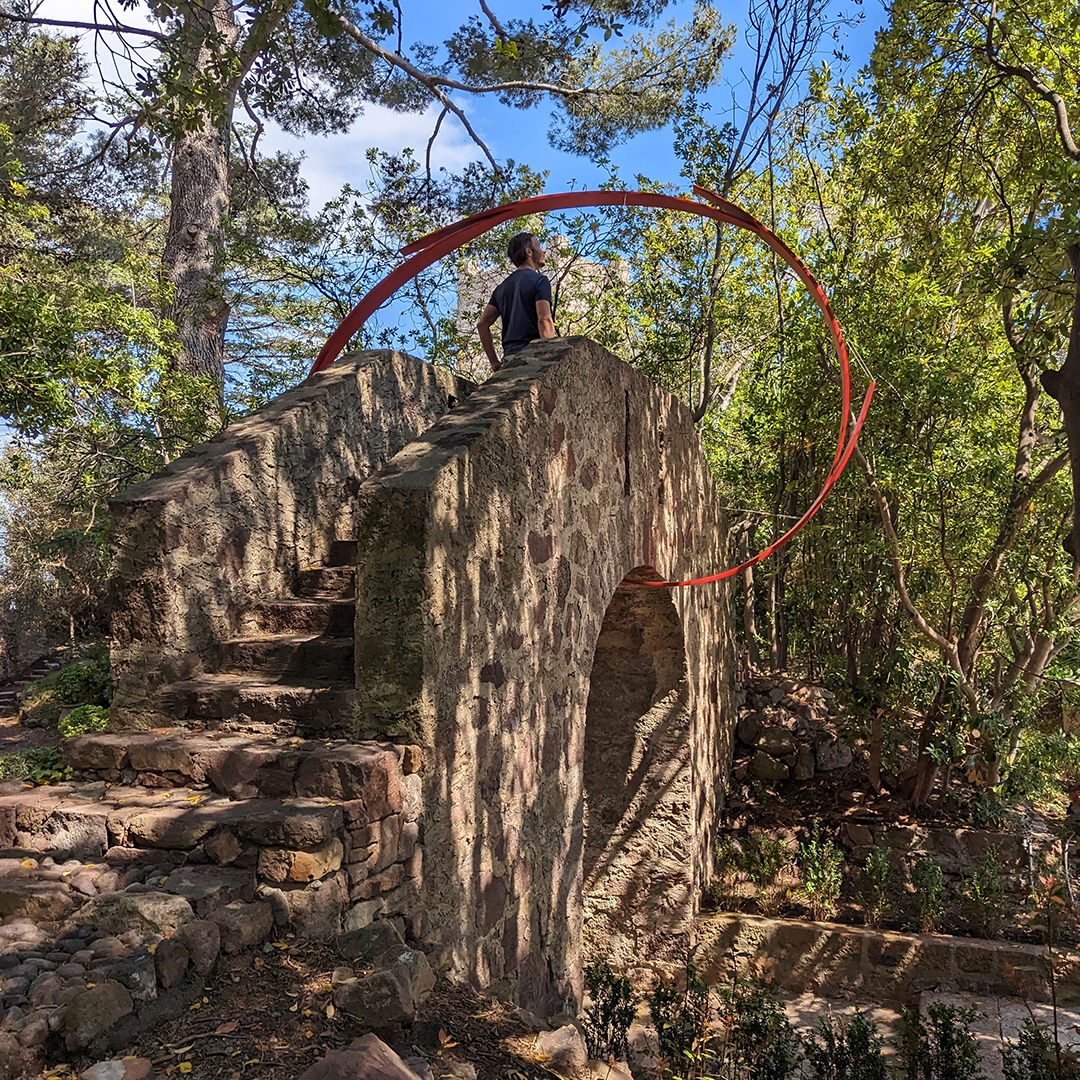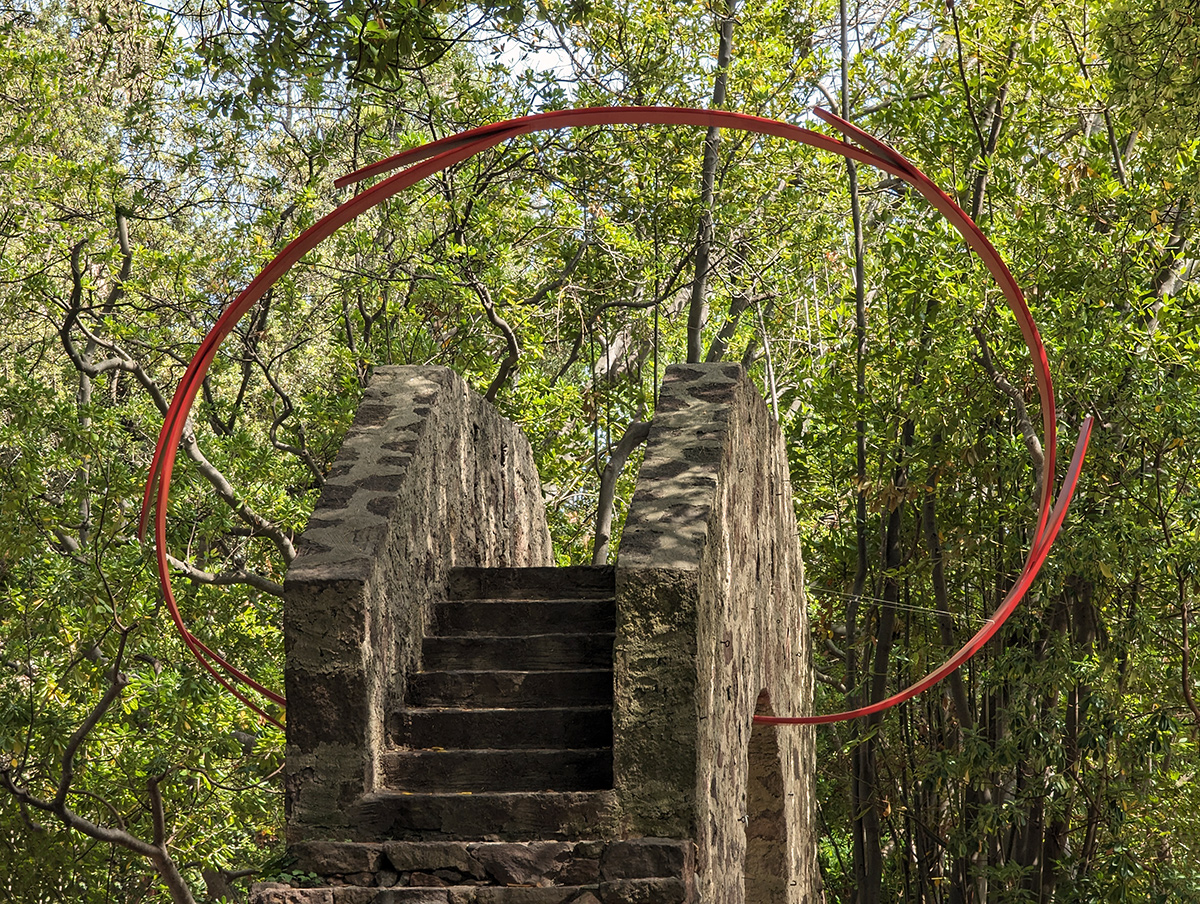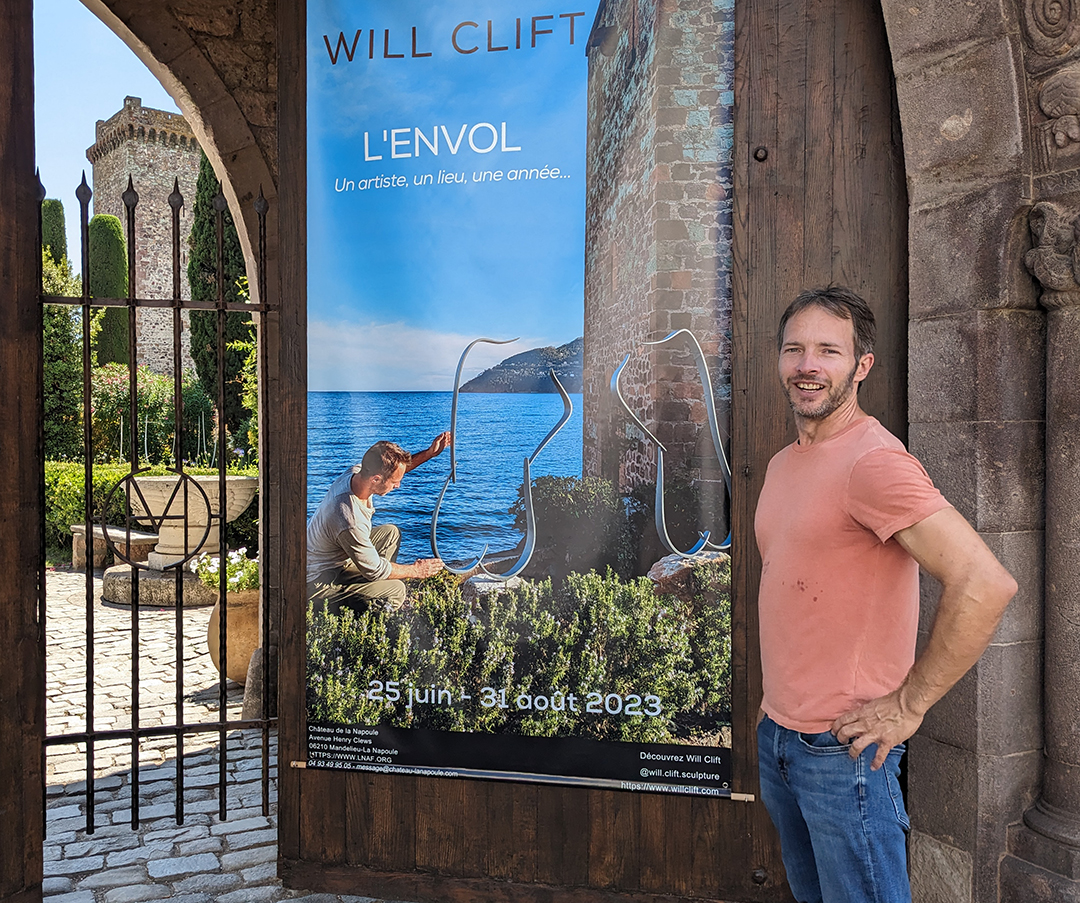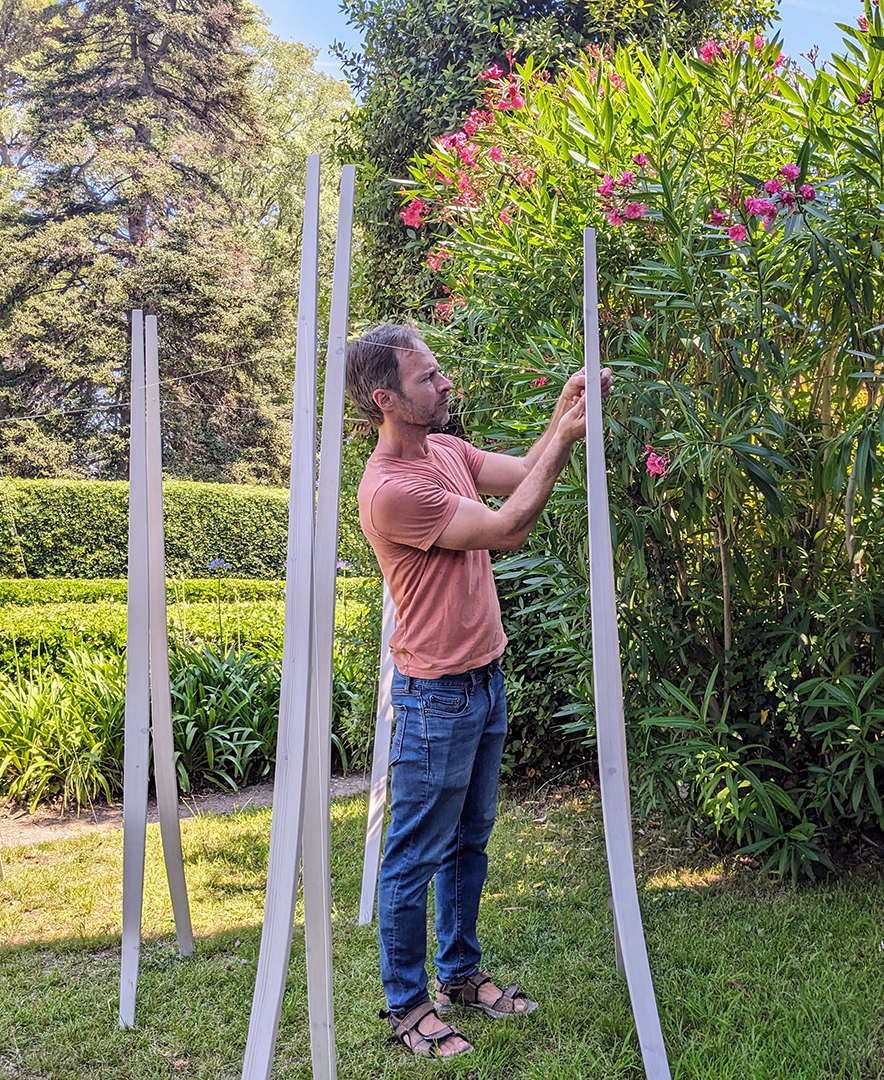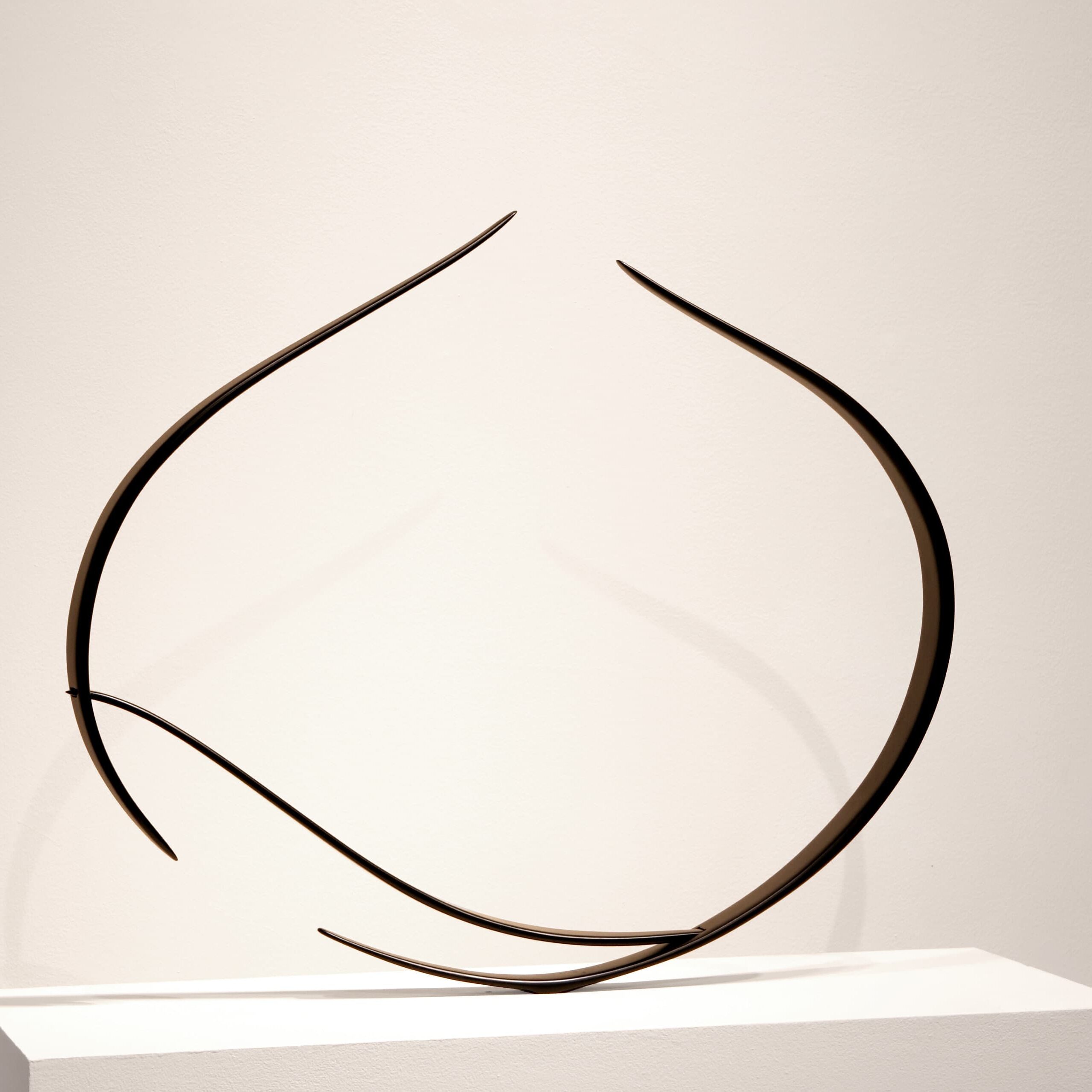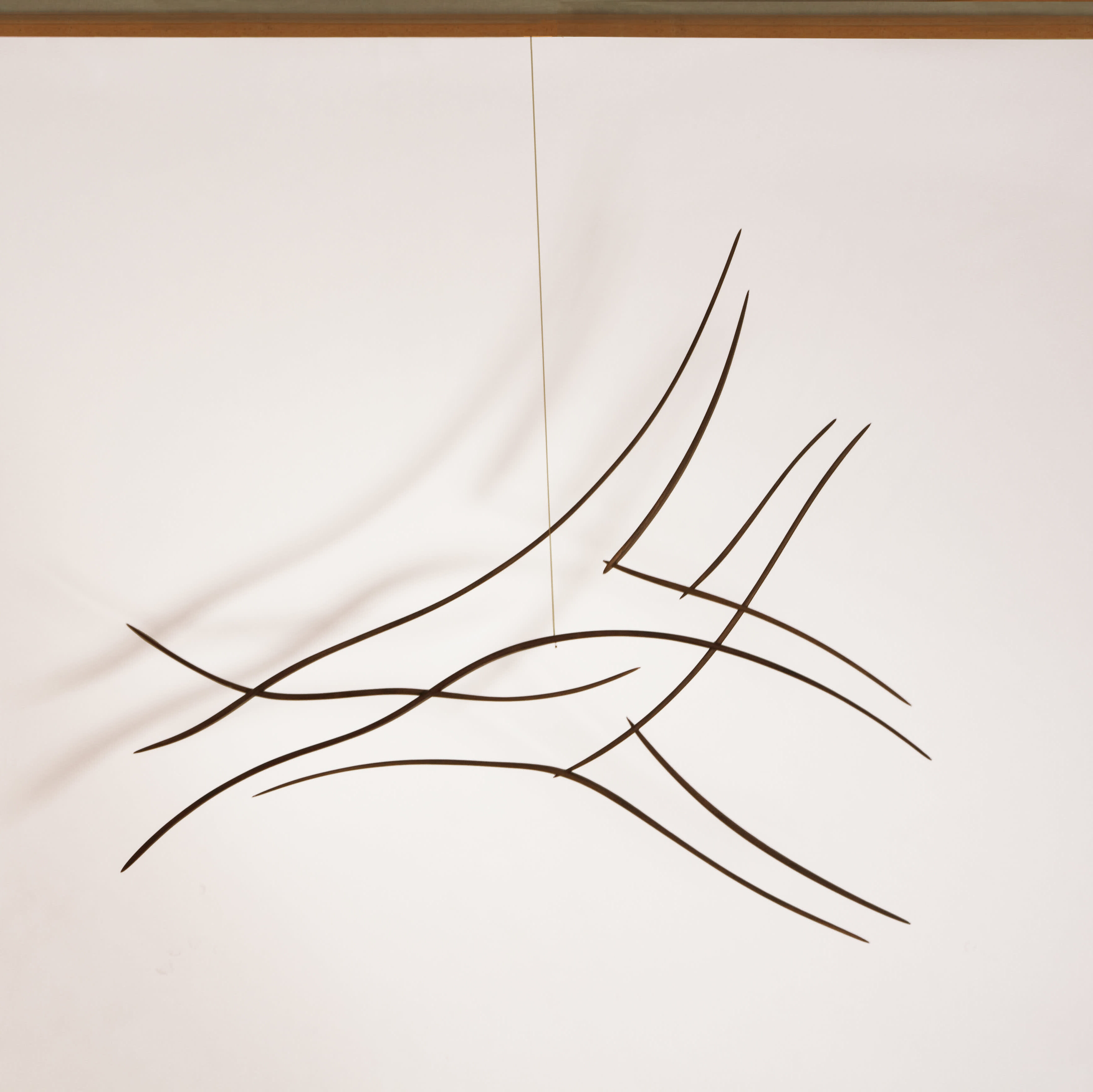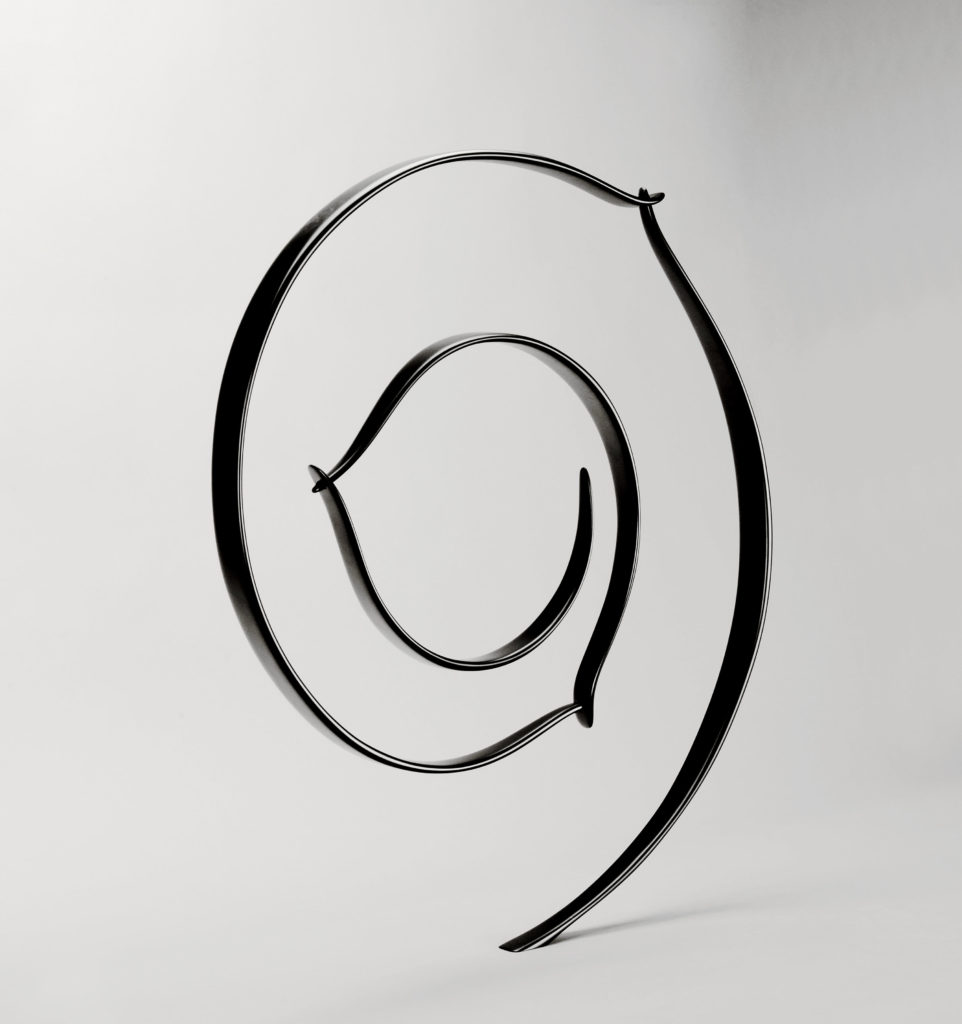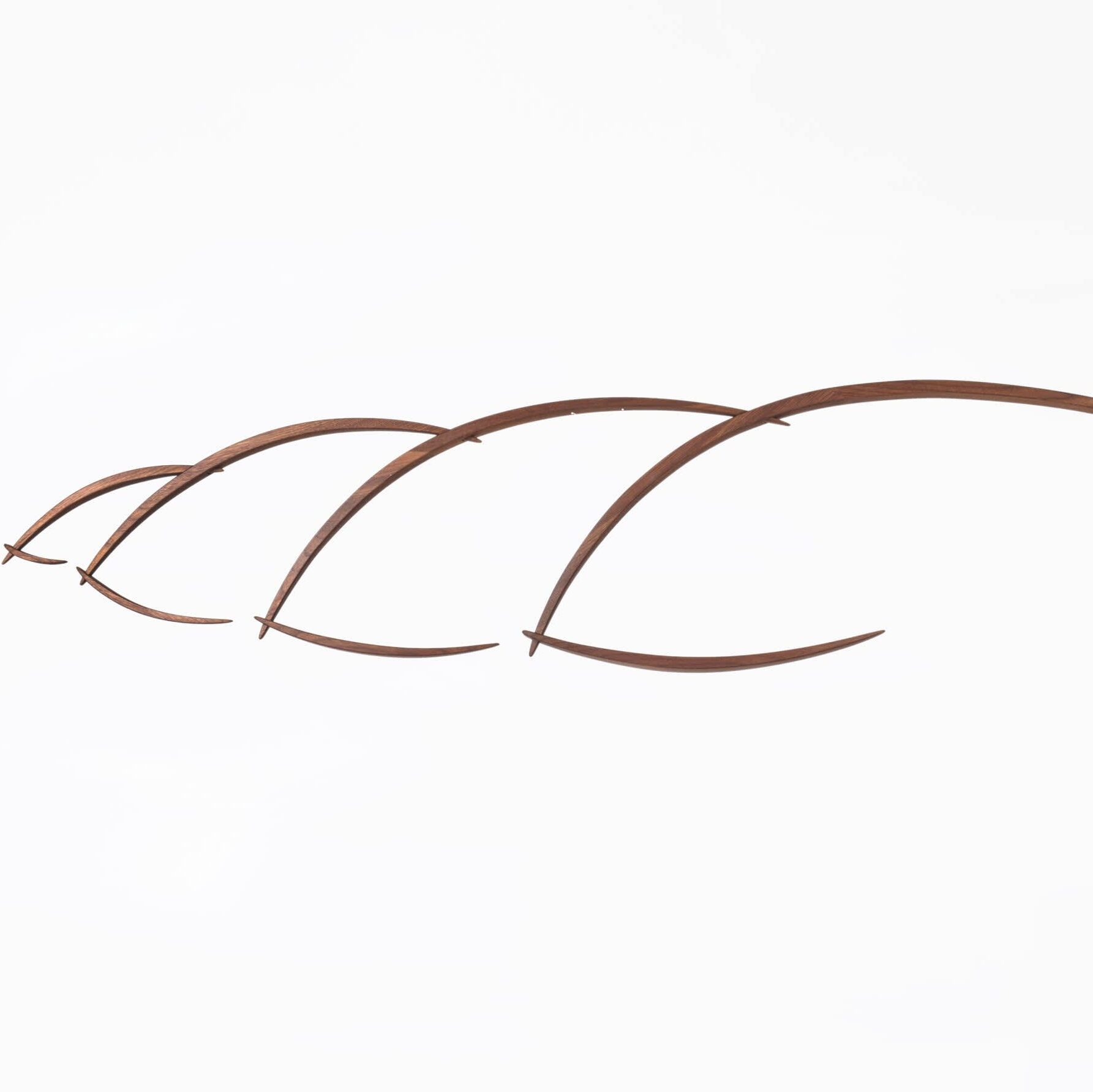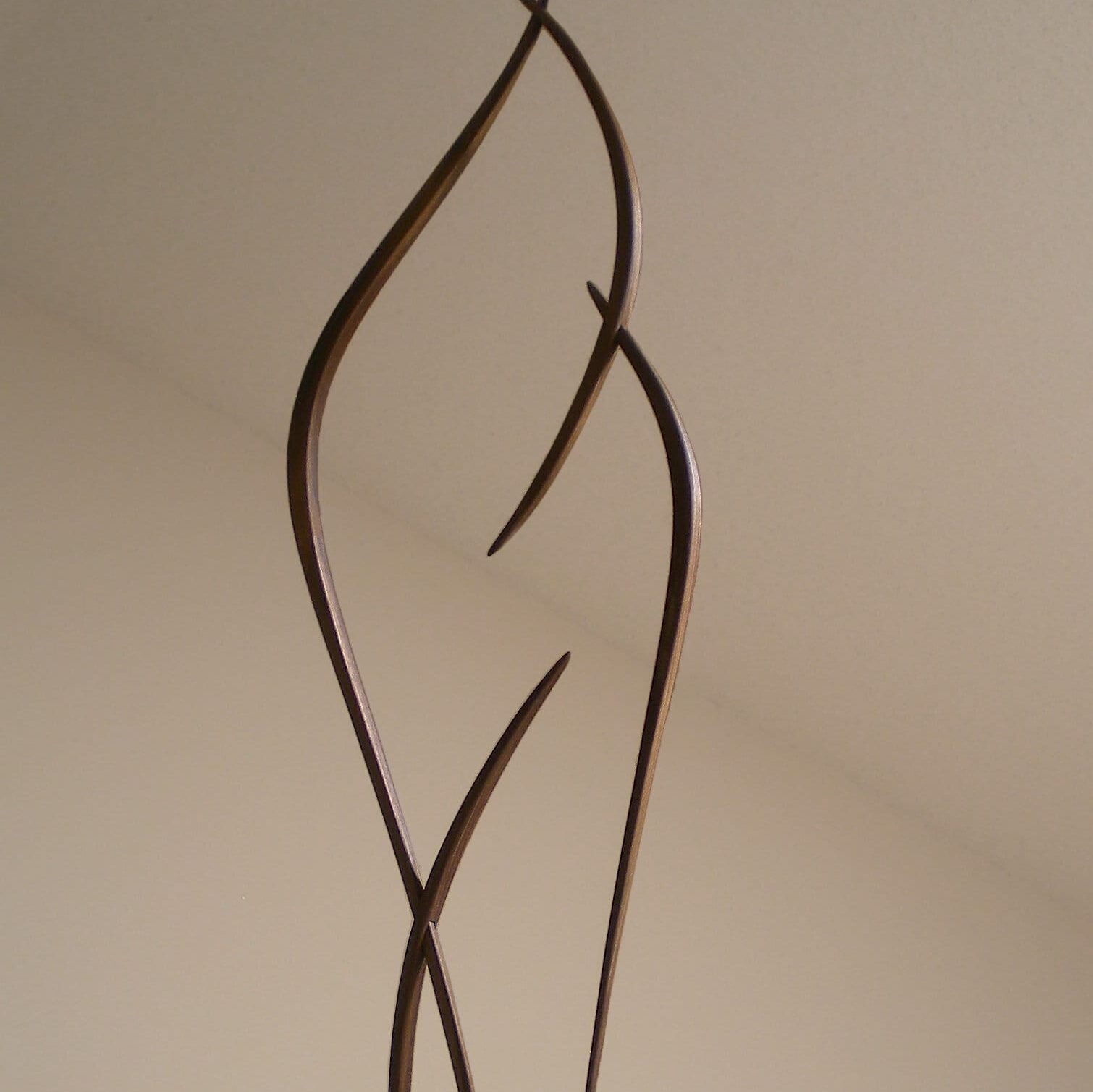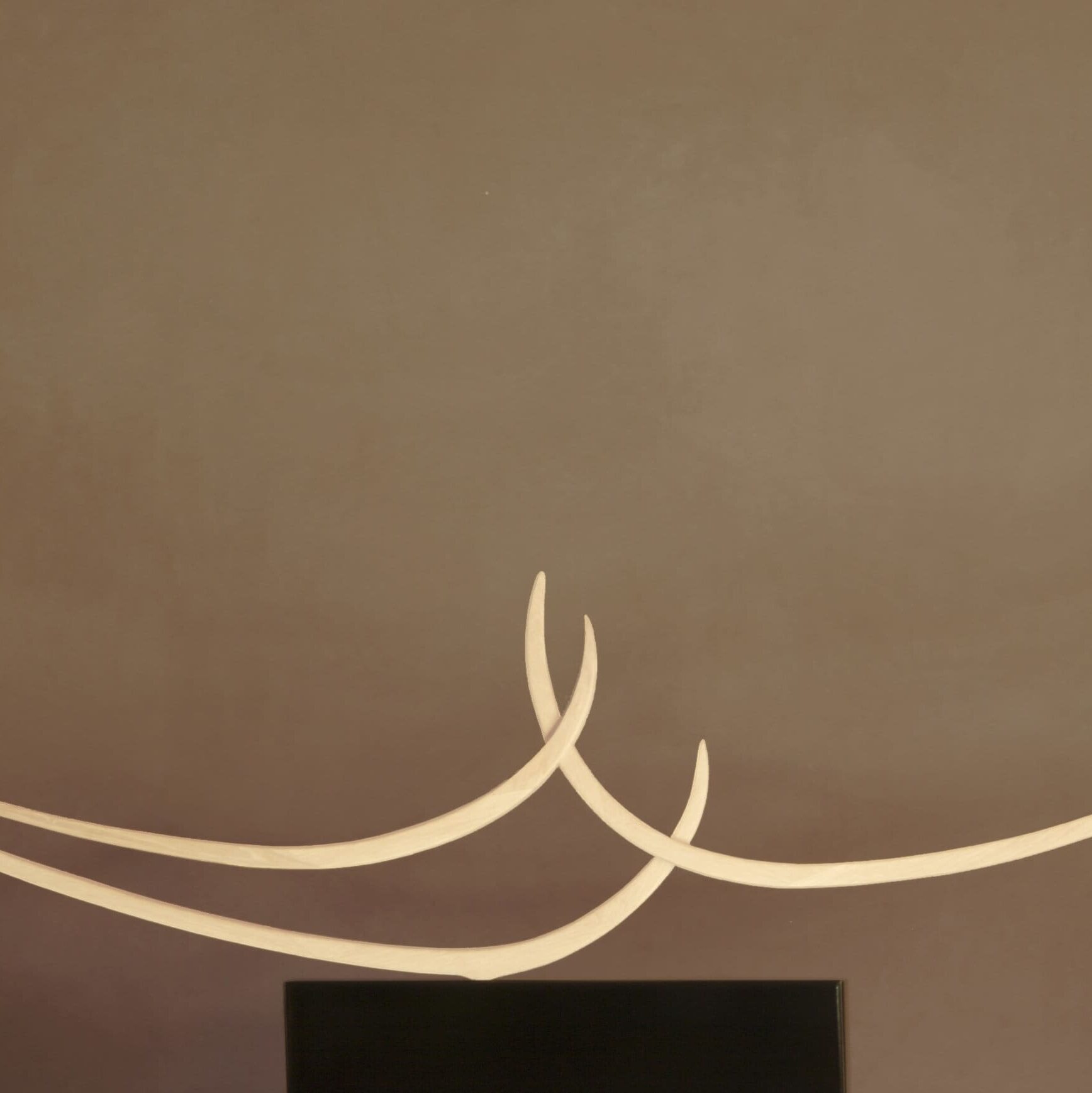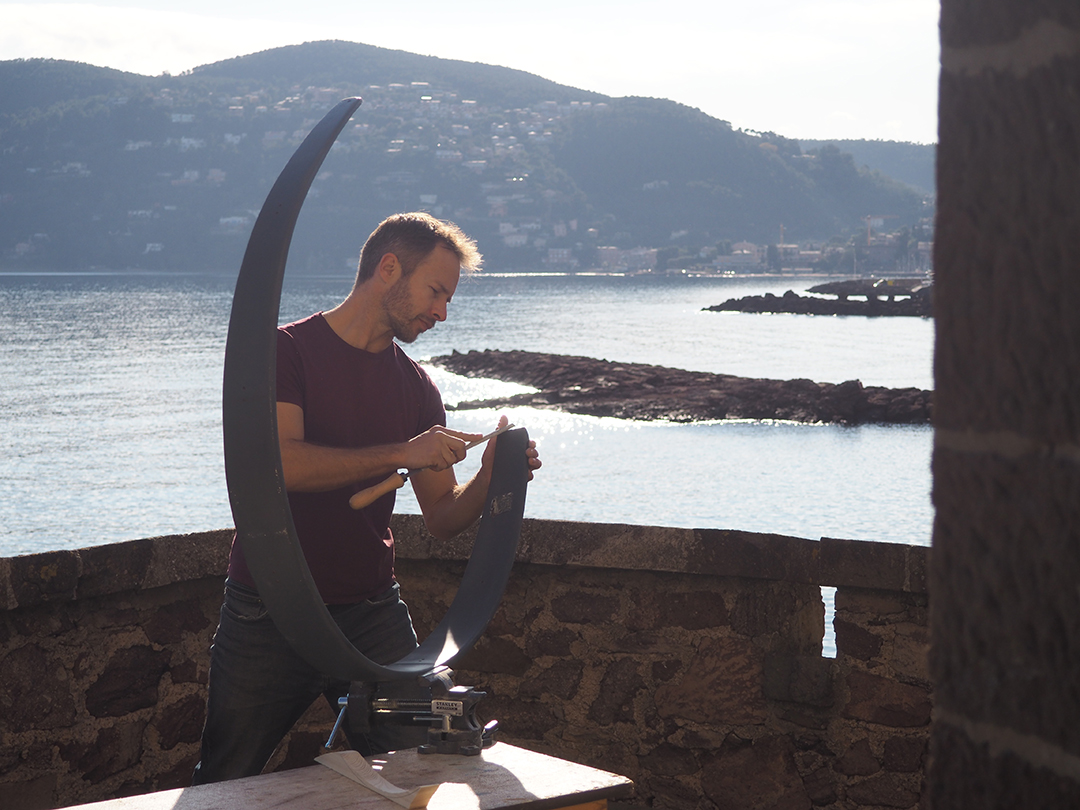
In the Studio with Will Clift
September 6th, 2023
Sculptor, Will Clift, virtually sat down with us to discuss his new body of work, his motivations, and his creative process. Clift explores gesture in sculpture through the interaction of form and balance. His sculptures consist of intersecting parts that stand in equilibrium. No part is extraneous, and the delicacy of this balance reveals the fine line between weight and weightlessness, motion and stillness. He captures the moment between being grounded and taking flight, the pure potential of movement that has not quite commenced.
Beginning each sculpture with a form or moment in the world around him that captures his attention, Clift’s process relies on intuition and a carefully honed sense of balance and proportion.
For each of his elegant sculptures, Clift’s hope is that, ‘the balance between movement and stillness evokes a sense of harmony, playfulness and wonder.”
What is your work/ this new body about?
In the first part of my career — up through about a decade ago — I created indoor sculptures that could go just about anywhere. Then in the last decade I expanded to outdoor and large-scale works, which required much more learning than I first expected — whole new understandings of form, proportion, and materials. Now this last year has been another transition point, where I’ve begun working on finding my own path to site specificity, both with indoor and outdoor sculptures. Sometimes this means creating a conversation with the existing materials, forms, or other physical aspect of a site. And sometimes it requires something more nuanced, that can only come by getting to know a place so well that I notice moments – transitory experiences – that define the place… moments that are simultaneously personal yet can resonate with any viewer. In these last months I’ve worked at capturing these ephemeral moments in sculptural form, and expressing them in a permanent way that’s inherently connected to where the work will exist. Place has always been very important to me, both indoors and out, and integrating it more intimately into my work has been an exciting step for me, as a sculptor.
Describe the concepts/motivations behind your work/creative process.
The main concepts that I’ve been exploring for nearly my entire career include the play between gravity, balance and equilibrium, the suggestion of gesture and movement in static forms, and the interaction of forces with forms and the tension that arises between them. Through these same explorations, I’m interested in connecting with viewers in particular settings where the impact of a work can make a significant difference: near places of healing, worship, or play, or in areas of particular stress and pressure — anywhere that contemplation, hope, and connection are valued. Working in settings like these is very rewarding for me.
How is this work made? What materials did you use and why?
I work with many materials: wood, composite, steel, even a special high-strength concrete; and with various techniques ranging from subtractive forming to casting to welding to lamination.
When I’m making a new piece, I start choosing a material and process by considering the feel and look that I want for that particular form. But those are just two factors of many… I also have to consider the scale of the piece and what strength of material is needed; whether the sculpture will be exposed to the elements; what sort of upkeep, if any, the owner is willing to do. So the more materials and processes I’m adept at, the better overall fit I can reach with each project.
For example, wood is the material I started with as a sculptor, and I’ll always love it —there’s something so wonderfully organic, alive about it. But it has definite limitations when it comes to larger works or outdoor placement. It’s also not the right aesthetic fit for many settings.
One thing that’s excited me in recent years is looking to other industries for material inspiration. Aerospace, civil infrastructure, even commercial and industrial architecture can offer great leads on ways to accomplish what I’m looking for.
What’s your background? Did you always want to be an artist?
My story basically boils down to never losing the spark and love for form that began when I was a young kid with a big box of wooden blocks. My big, cantilevering block towers evolved first into more complicated constructions, then into designing and making furniture as a teenager, then into sculpture in the vein of what I do now. My first form exploring balance and equilibrium came in 1996, when my high school physics teacher challenged the class to find or make an object that “balances but looks like it shouldn’t.” The next day, having forgotten the assignment until just before I left home, I quickly rummaged through my box of wood scraps, pulled three pieces out, chiseled two rough holes, and connected them into a self-supporting structure that stood on a small foot. In many ways this was the seed out of which my current work grew.
In 1998 I moved to California to attend Stanford, and got two degrees there, but neither was in art. Instead, I creating my own programs that combined psychology, symbolic systems, environmental studies, and mechanical and civil engineering. But I’d sneak into the mechanical engineering machine shop to make sculptures on the side, or find a way to justify an abstract form for a class project.
After receiving my Masters, I went to work as a sustainability engineering and architecture consultant at a non-profit in Colorado for three years, convinced that I wanted to keep sculpture personal, just for me. Despite that intention, I began to exhibit my works, and after three years I realized I was putting my energies in the wrong direction. So I left the job — the one and only of my adult life — in 2006.
What kind of creative patterns, routines or rituals do you have? What time of day do you prefer to work?
I find routine to be stifling, in opposition to a creative life. I know this is not true for many (and it can be a hard characteristic for those around me), but I’m most able to tap into my creative world when I’m in a new environment, uncomfortable, uncertain, and exposed to novel sources of inspiration — particularly from non art-related sources. I find that each hour of the day presents itself with something that is optimally done just then. It may be sleep, it may be a long run in the hills, it may be sketching a new form, or it may be getting covered in sawdust as I sweat over a belt sander. To the extent that I can live this way (while being a father to two young children), I am more in my element and more successful and satisfied with my work.
How do you begin a work? Do you research? If so, how?
Much of my creative process begins with a sudden moment of recognition. I’ll be walking down a sidewalk when some tiny detail of form, a subtle movement, or an abstract sensation grabs my attention. It’s like an unmistakable poke in the gut. I’m compelled to stop whatever I’m doing, look, and capture it, ideally before my mind gets busy interpreting or labeling it. It’s almost like coming across a bubbling spring, a connection between the everyday world and a hidden aquifer deep beneath.
What thoughts go through your mind when you create?
All sorts of thoughts go through my head day and night, and it’s no different when I’m creating a new work. But over the years I’ve learned to let go of those thoughts, to allow them to come and go but to not encourage them, not listen to them. So many thoughts bring with them ‘shoulds,’ comparisons, or intellectual ideas, and these can get in the way of something truer that is what I’m trying to allow out. When I can get past the thoughts, that’s when I can reconnect to that old intuition that I had when I was young, to get my head out of my own way, to work in a way that is largely naïve to the world and to the art world in particular.

